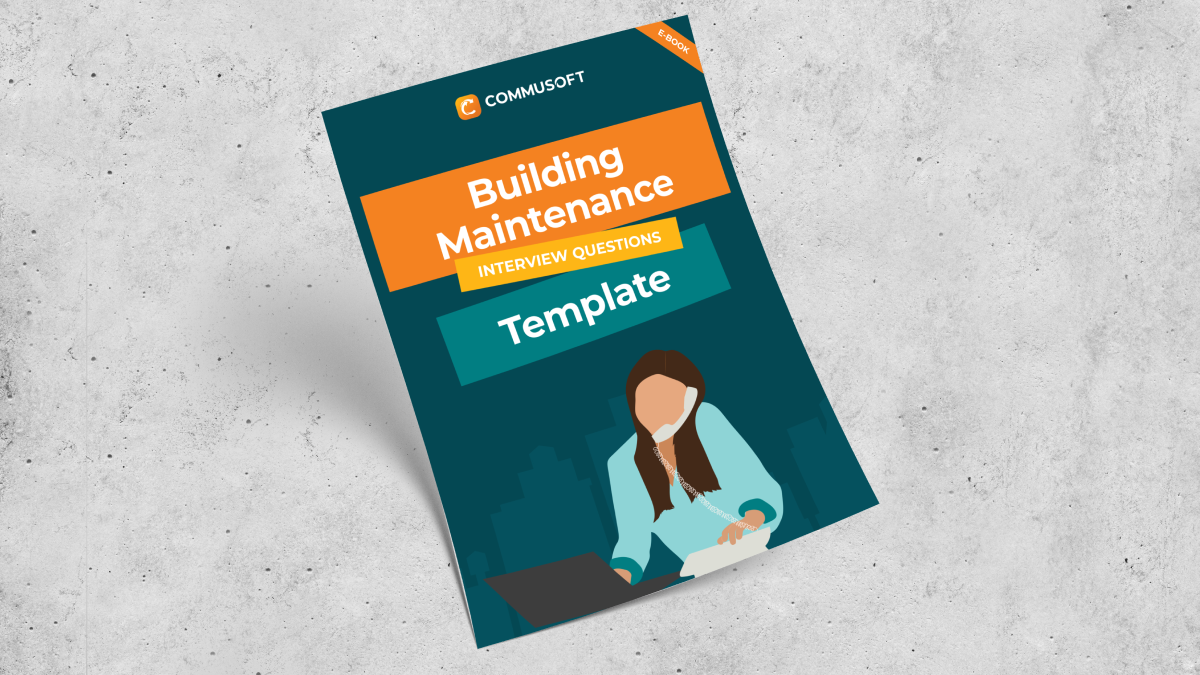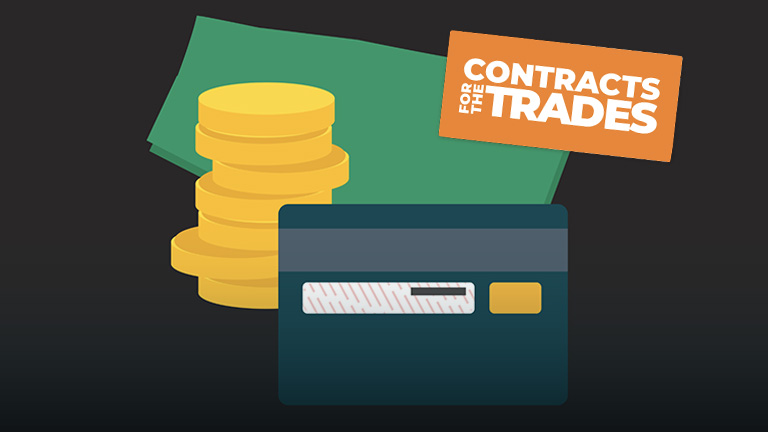What Is Vendor Invoice Management? + 10 Other Contractor Invoicing Essentials
July 7, 2021 | Read: 13 minutes

Vendors play a big role in a contractor business’s growth.
Whether you run a local plumbing business or a national property maintenance company, you know there are three essential qualities to a good supplier: price, speed of delivery, and reliability.
Price needs no explanation: the cheaper you can get quality parts, the more leeway you have when pricing your own services. This way, you can decide if you want to transfer those savings onto the customer (and so position yourself as an affordable service), or, alternatively, keep those savings for yourself and target fewer, but more affluent customers.
Speed of delivery is essential in guaranteeing your customers a project deadline and sticking to it.
Reliability is the underdog of these three qualities, but when working with a supplier, you need to be certain you can count on them to deliver the parts you need, when you need them, at the reasonable price you’ve agreed to pay. Without reliable suppliers, you can’t offer a reliable, consistent service to your own customers.

So where does vendor invoice management come into play?
If you have a strong partnership between your trades business and your supplier, everyone stands to win, including your customers.
The fact of the matter is, though, that field service companies are also responsible for paying their bills, paying them quickly, and paying them reliably. Of course, as in any relationship, all parties involved are equally responsible for ensuring it continues positively.
This means that, if you go looking for a new supplier because your current one failed on their part in those promises, you have to be able to prove you weren’t at fault, too. The next step after this is to do your research and choose your vendors more wisely.
Without a good understanding of vendor invoice management, you run the risk of being left in the dark when dealing with your parts suppliers. So, let’s break down vendor invoice management:
What is a vendor invoice?
A vendor invoice is a bill or payment requirement document from a supplier, in exchange for goods or services. Most contractors will receive vendor invoices regularly from their preferred parts retailers and enter them into an Accounts Payable, increasing their credit balance.
An open vendor invoice is an invoice that hasn’t been paid. When it’s cleared, the Accounts Payable amount is reduced by the debit amount they paid. This means a credit balance in Account Payable is made up of open vendor invoices.
How do you manage vendor invoices?
Your preferred accounting software, whether that’s Quickbooks, Sage, or any other, will come with a feature to create, manage, and record vendor invoices. However, as a contractor, the easiest way to organize them is to generate them using your job management software. In this way, you can take advantage of recorded inventory information, and existing quotes, and have a hold on the full process.
After an invoice is generated, some software will ask you to send it manually, via email, to your preferred supplier, while others offer direct integrations where the invoice goes out automatically. Reporting tools are also generally available so that you can see at a glance how many invoices you’ve sent, how many have been paid, etc.
When it comes to who manages vendor invoices, that depends on your company structure. Smaller contractors usually have generic admin employees who deal with all types of invoices and a variety of other tasks, plus a part-time accountant who comes in to help regularly but doesn’t work full-time. Small-to-medium businesses will have someone who manages finances specifically and full-time, while larger businesses have entire departments dedicated to this task.
When it comes to management methods, there are four main categories:
- Manual invoice management, where everything is done on paper. Double data entry and errors are abundant, but the barrier of entry is very low – anyone can do it. A standard invoice template is especially useful in this scenario.
- Hybrid invoice management, where an accounting software is used without any general management digital tool, so paper records are still kept. This is slightly better than manual invoicing, but not by much because time is still wasted on paperwork, and storing physical records is risky.
- Digital invoice management, where a job management software with an accounting integration is used in tandem for all invoicing activities. The gold standard nowadays, it ensures accurate record keeping, keeps costs low, and employees efficient. It’s especially useful to explore for your plumbing or electrical business, for instance.
- Automated digital invoice management, where the job management software has automation features like consolidated invoicing that can link invoices with POs and jobs on its own, and generate detailed reports. This is for businesses that truly value the quality of their work and aim to grow.
And be sure to check out Rhy’s top tips for invoicing software:
What does a vendor invoice typically list?
There are a few essential things a vendor invoice should list:
- Vendor name
- Vendor details (address, phone, contact number)
- A “Billed to” section where your contracting company name& details should go
- Invoice number
- Invoice due date
- A table listing the parts you’ve purchased (name, description, code, price, quantity, etc.)
- A sub-total cost, which represents the amount you have to pay, not including tax
- Tax amount owed
- Total due
- Signature space
- Date issued
Vendor invoices will vary from this template but these are some essential information they should always include.
How to request an invoice from a vendor?
When you’ve created and sent a purchase order for a list of parts, it’s the vendor’s responsibility to send back an invoice. Otherwise, an email to your account manager should be enough of a nudge. Make sure to include the purchase order number so that they’re able to search for it in their own system.
Who should review all vendor invoices for accuracy?
When it comes to vendor invoice accuracy, the main responsibility falls on the vendors themselves. At the same time, it’s good business practice for your admin, an accountant, or a finance manager to review invoices, too, since it saves you a lot of trouble in the future.
If there is indeed an error on your vendor’s invoice, waiting for them to notice and inform you isn’t the best way to manage your finances. They might even prefer not to inform you of it, unless you’re underpaying. Ideally, you’d be able to link your purchase orders to your vendor invoices automatically so that you’re always aware of what you ordered and what you’re actually paying for.
How long does a vendor have to invoice?
This depends on the type of contract you’ve signed with your vendor and your state laws, but most written purchase contracts will have a four-year statute of limitation. Legally, a vendor has up to four years to invoice you until they lose the right to claim payment. However, as you can imagine, this is no way to run a business and most vendors like to be paid promptly so they’ll invoice you as soon as possible, usually within a working week.
If you’re dealing with large suppliers and you order in bulk, they can invoice you for all the parts (a consolidated invoice) at a set date (e.g. at the end of each month, at the end of a quarter, etc.), just like you would with a property maintenance contract. Ideally, you would discuss these terms and conditions when you open a business account with a vendor so that there’s no confusion on either side. Remember that any friction in your parts purchasing process translates as friction in your customer journey!
How long to keep vendor invoices?
It’s recommended by the IRS to keep records referring to business income or deductions (like invoices) for as long as their statute of limitations runs. This way, you always have a (digital) paper trail to fall back on if you ever need to prove a payment. Following up on the previous point, you should keep vendor invoices for four years, but, again, this depends mostly on the type of contract you’ve signed and your state laws.
At the same time, it’s good management to keep records and to make sure these are:
- Organized according to a formal structure
- Efficient, meaning it doesn’t take forever and a day to file
- Easy to understand even to a new hire. Many contracting businesses will have had the same admin person for years if not decades, so when suddenly they find themselves needing to hire someone new, they may realize none of the record-keeping makes sense to anyone but their old hire!
The best practice when keeping records of vendor invoices is to save them on your cloud-based software (so accessible from any computer and not dependent on a hard copy that can easily be lost or destroyed) and link them up to their corresponding purchase orders. This will help you with budgeting later down the line.
What is a deduction that a vendor allows on the invoice?
Some vendors might allow a deduction which shows up on the invoice if you’re able to pay before the deadline. This is called a rebate and the goal is to encourage you to clear the invoice quicker, which contributes to the vendor’s healthy cash flow.
It’s up to you if you want to take advantage of these rebates. On one hand, it can end up being cheaper to buy parts like this, but on the other, if your cash flow can’t support it, you might end up using money you don’t have. What’s more, that money has to come from somewhere and if you bail on paying other invoices, you might end up spending the savings on fines or interest accrued from these debts.
What are some common vendor invoicing problems?
Below, then, are some of the most common problems that can get in the way of managing supplier invoices and our tips for fixing them:
- Suppliers format their invoices differently
You could be forgiven for thinking, then, that so long as you have all the details you need to process an invoice, there’s no harm in it taking a little extra admin time to sort out. However, it’s often the case that the impact of “just a little each time” can add up to a whole lot, in the long run.
- Human error causes confusion
Something as simple as inputting the wrong digit can cause a cascade that hurts productivity, all because you now have to waste time calling back an invoice, chasing money that shouldn’t have gone out, or handle irate service calls; all of which can even go so far as to damage your reputation.
- Double data entry is time-consuming
The more screens you have to work with, the more time your admin will have to waste on entering the same information over and over again. The latter might not look like such a big concern at first, but tedious, repetitive, and redundant tasks are a big source of employee burnout and turnover, both of which can cost you a pretty penny.
- Raising invoices can only be done in the office
Going back to an issue we raised earlier, if you’re not yet using cloud software, you’re tied to an office desk for any invoicing-related activity, vendors included.
What are some vendor invoice management Key Performance Indicators (KPIs)?
Whenever you’re looking to improve an aspect of your business, be it invoicing, scheduling, customer service, or any other, you need to measure your current performance against a set of indicators, then implement changes, and measure again after a certain amount of time. This is the KPI method.
When it comes to vendor invoice management, there are a few classic indicators of performance:
- Time it takes to receive an invoice from a vendor
- Time it takes you to pay the invoice
- Number of late payments
- Number of invoicing errors (such as incorrect amounts, deadline mistakes, etc.) made by the vendor
- Number of invoicing errors (such as duplicate payments, purchase order errors, etc.) made by your business
- Cost per invoice (admin salary, processing time, lost early discounts or late fees, etc.)
The advantage of measuring vendor-related KPIs, too, is that you can use this data to rank your vendors or judge any new potential suppliers against the ones you already have a relationship with.
This way, you always have the upperhand, even in negotiations. For example: a new supplier offers you 15% off on your first 3 orders. You’ve already done the math and know their average prices are the same as your current supplier, but their delivery takes up to 3-5 business days longer. You’re in a much better position to judge whether those savings make up for the effort of starting a new relationship and foregoing a speedier, more reliable partner.
This sounds pretty simple, right? So, why aren’t more people talking about it? The reason not many contractors look into their vendor invoicing KPIs this closely is because they don’t really want to know what goes on there. It’s oftentimes tedious and the numbers might not look like what you want them to, so ignorance is bliss. According to experts, a manual invoice can cost from $12 to $30 for an average business, with larger ones paying up to $40.
However, this is no way to run a successful service business. Knowing that automated digital invoicing cost approx. $3.50, the solution is straightforward to implement, and the motivation to save anywhere from $8.50 to $36.50 per document should be pretty powerful.
Invoicing Software with Commusoft
Good vendor invoice management practices can provide you with better parts prices, lower admin costs, and more reliable services. All these play a part in offering a remarkable customer experience, with quick project turn-arounds, and quality work.
This being said, if you try to do it manually. it does take effort to organize and keep an eye on every incoming invoice, making sure they’re always accurate and paid on time. It’s why invoicing software for field services is so important.
One way to lower your invoicing costs and help your employees make better use of their time is to make full use of your management software’s invoicing features. Drag and drop documents in, import and link them to specific purchase orders, and even edit them all on a single screen.
For that and much more, check out Commusoft’s automated vendor invoice import feature!

Cristina Maria
I'm here to bring you next-level strategies to the field service industry. When I'm not working on the best tips to grow your business, I'm on the lookout for sci-fi novels and cookie recipes.








